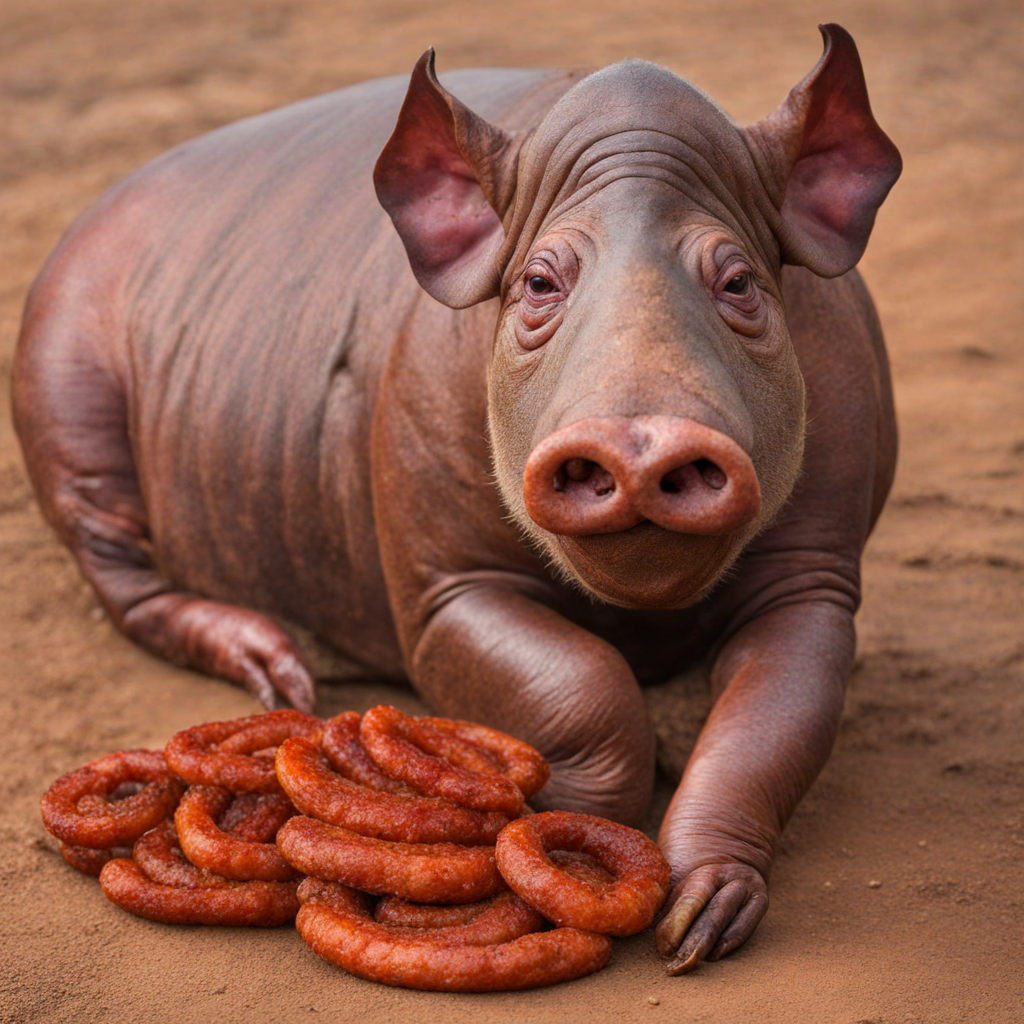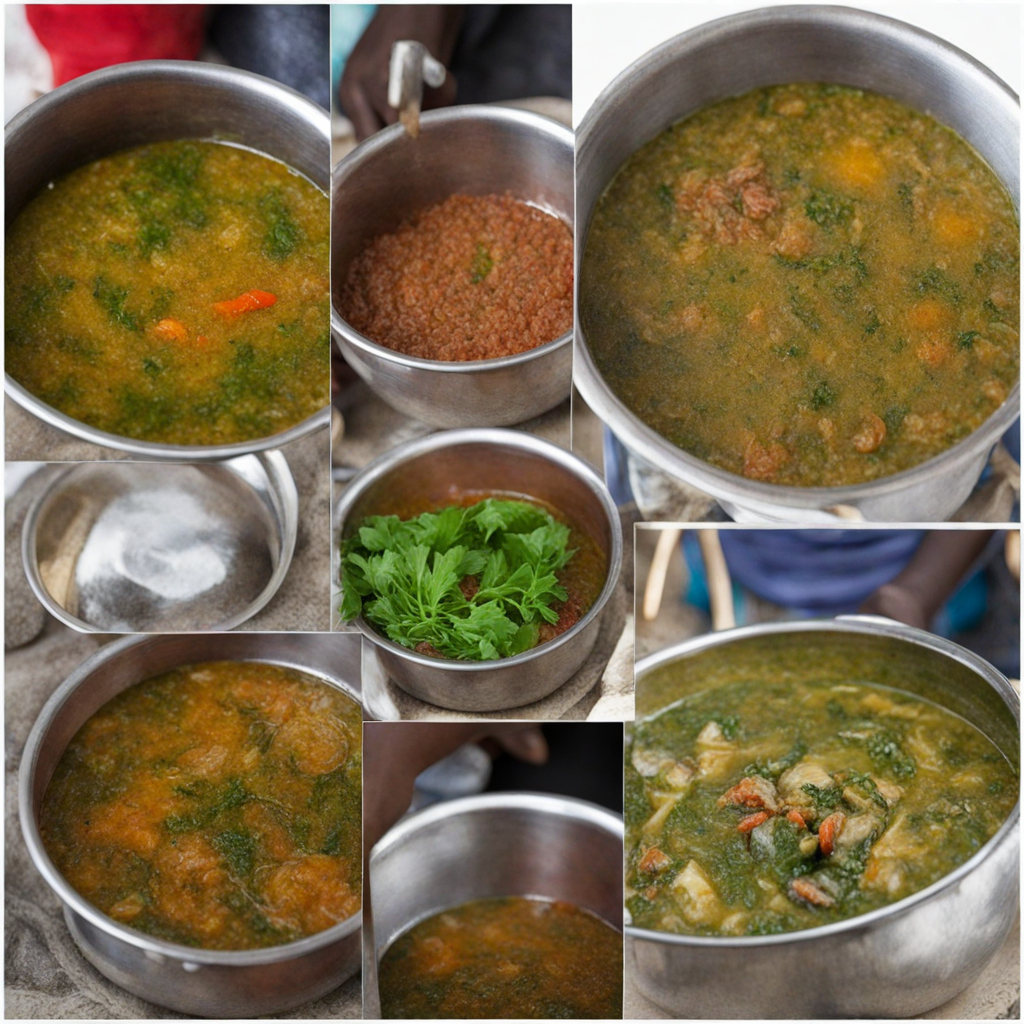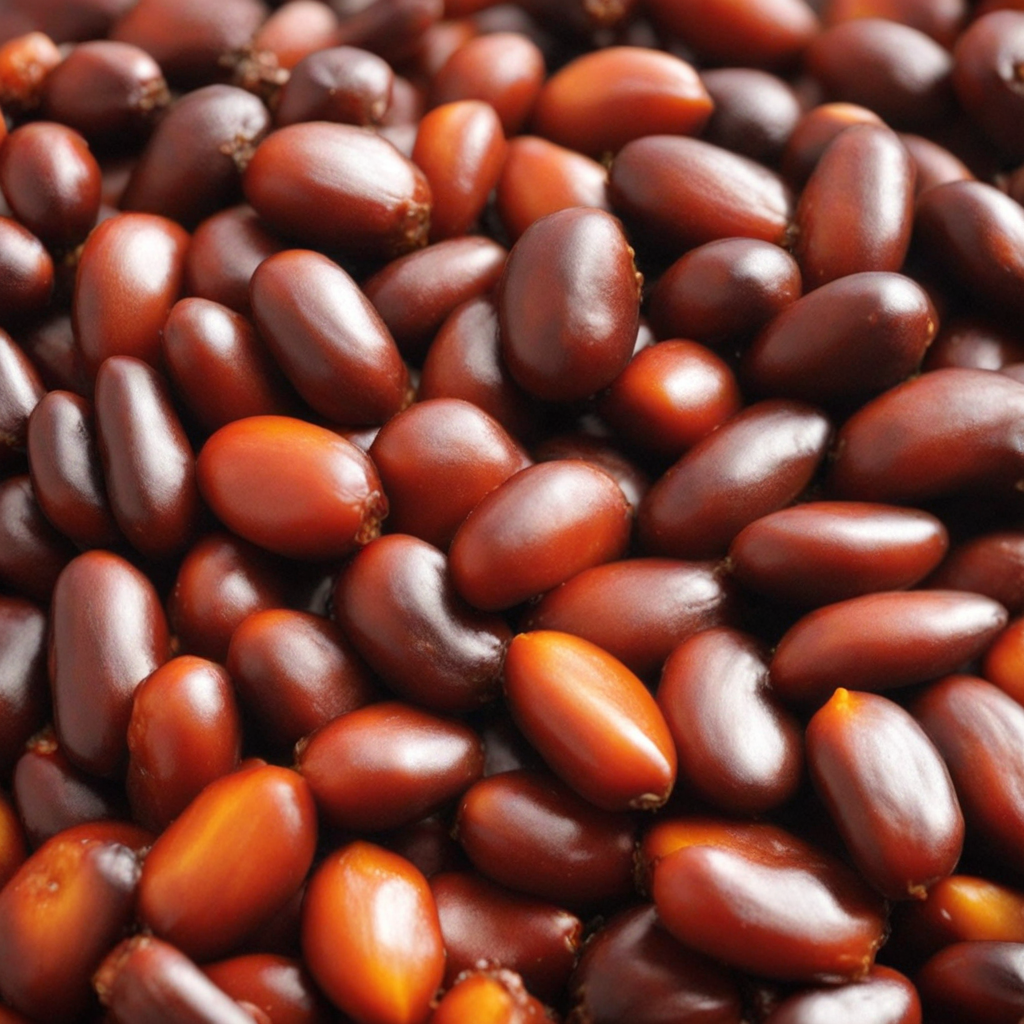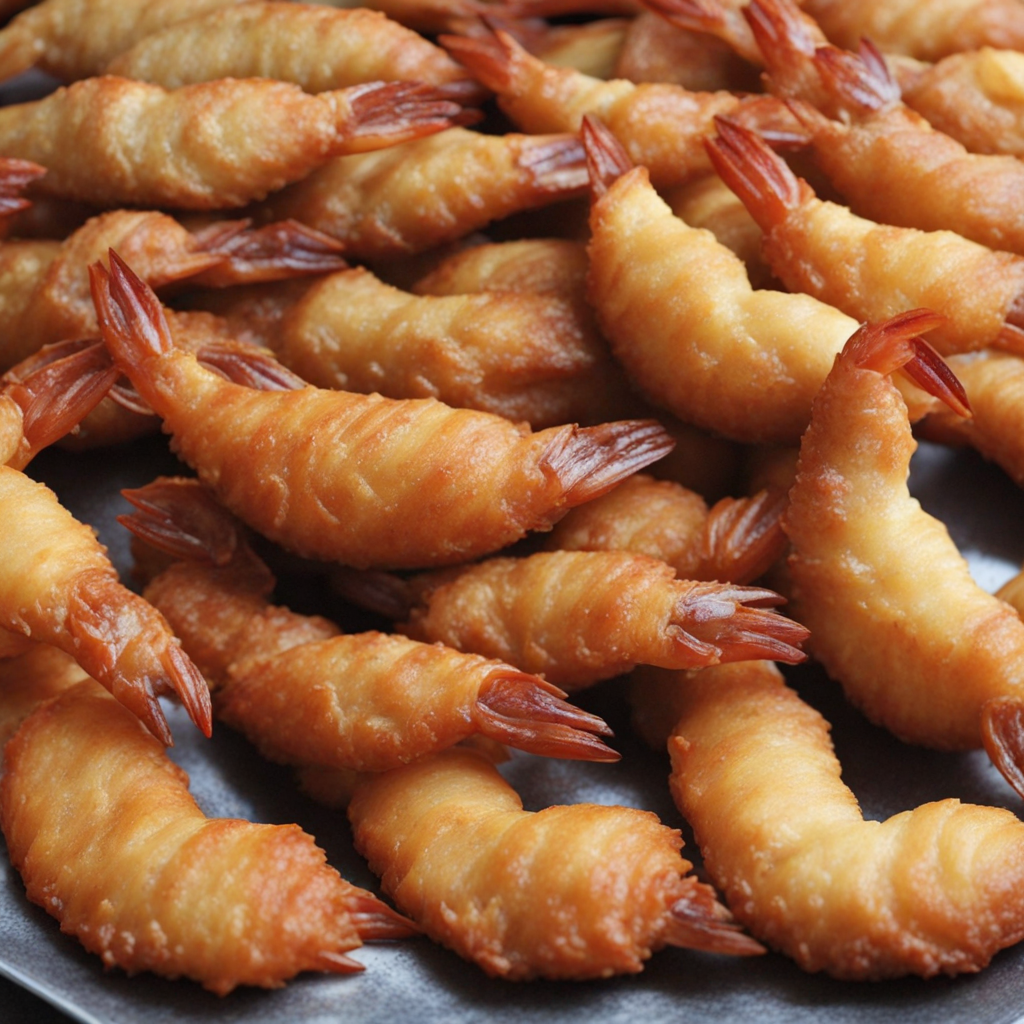Babirusa
Babirusa, a unique culinary gem from Guinea-Bissau, offers an intriguing blend of flavors that reflects the rich biodiversity of the region. This dish is primarily made from the meat of the babirusa, a wild pig native to the islands of Indonesia, which is sometimes referred to as the "deer pig." The meat is known for its tender, succulent texture and slightly sweet flavor, making it a delicacy when prepared with local spices and herbs. Traditional methods often involve marinating the meat in a mixture of palm oil, garlic, and chili, allowing the flavors to deeply infuse before slow-cooking or grilling to perfection. Accompanying the babirusa is a medley of vibrant sides that highlight the agricultural bounty of Guinea-Bissau. Often served with rice or a thick porridge made from cassava, the dish is complemented by a variety of vegetables, such as okra and sweet potatoes, which are commonly found in the region. The use of fresh ingredients not only enhances the dish's taste but also showcases the local farming practices that prioritize sustainability and freshness. The combination of textures and flavors creates a harmonious balance that elevates the overall dining experience. Additionally, the cultural significance of babirusa extends beyond its taste. It is often prepared during special occasions and communal gatherings, symbolizing unity and celebration among families and friends. The process of cooking babirusa is typically a communal affair, where everyone comes together to share in the preparation and enjoyment of the meal. This dish not only tantalizes the palate but also tells a story of tradition, community, and the vibrant culinary heritage of Guinea-Bissau.
How It Became This Dish
The Babirusa: A Culinary Treasure of Guinea-Bissau #### Origins The babirusa, often referred to as the “pig deer,” is not just a fascinating animal; it serves as a significant cultural icon and source of sustenance in Guinea-Bissau. This unique creature, scientifically known as *Babyrousa babyrussa*, is native to the islands of Indonesia, yet its name resonates in the culinary tradition of Guinea-Bissau, where it symbolizes a rich tapestry of history, culture, and gastronomy. In Guinea-Bissau, the term "babirusa" is often used to refer to a specific type of wild meat, particularly that of the local wild boar. The hunting and consumption of babirusa are deeply rooted in the traditions of various ethnic groups in the region, especially the Balanta and Papel peoples. These groups have long relied on the land and its wildlife for sustenance, and the babirusa has become a crucial part of their diet and cultural identity. #### Cultural Significance The babirusa holds a special place in the cultural heritage of Guinea-Bissau. It embodies the relationship between the people and their environment, representing not only a source of food but also a connection to their ancestral traditions. The hunting of babirusa is often accompanied by rituals and communal gatherings, emphasizing the importance of community in the culture of Guinea-Bissau. In many rural areas, the hunt is a rite of passage for young men, symbolizing strength and bravery. When a babirusa is successfully hunted, it is more than just a meal; it is an event that brings families and communities together. The meat is celebrated in communal feasts, where stories are shared, and cultural practices are passed down through generations. In this context, the babirusa transcends its role as a food source, becoming a symbol of cultural heritage and unity. #### Traditional Preparation and Consumption In traditional culinary practices, the preparation of babirusa meat varies among ethnic groups but often involves marinating the meat with local spices and herbs. The cooking methods can include grilling, smoking, or stewing, each technique imparting unique flavors that reflect the biodiversity of the region. One popular dish is the *caldeirada de babirusa*, a hearty stew that combines the rich flavors of the meat with fresh vegetables and spices. This dish is not only a staple during communal celebrations but also a comforting meal for families. The use of local ingredients such as cassava, sweet potatoes, and palm oil enhances the dish, showcasing the agricultural bounty of Guinea-Bissau. The significance of babirusa extends into the realm of social customs as well. The sharing of this meat during festivals and special occasions reinforces bonds among community members. It fosters a sense of belonging and cultural pride, as families gather to prepare and savor the flavors of their heritage. #### Development Over Time As Guinea-Bissau has evolved, so too have the practices surrounding babirusa. The country gained independence from Portuguese colonial rule in 1973, leading to a revival of cultural identity and traditions, including culinary practices. The babirusa has seen a resurgence in popularity as people have sought to reconnect with their roots and embrace traditional foods that symbolize their heritage. However, the increasing pressures of urbanization and globalization have introduced challenges to the traditional practices surrounding babirusa. As cities like Bissau grow, the demand for wild meat has sometimes led to overhunting and a decline in babirusa populations, raising concerns about sustainability. Efforts to protect wildlife and promote responsible hunting practices have become vital to ensure that this culinary heritage is preserved for future generations. In recent years, there has been a growing movement to incorporate babirusa into the modern culinary scene, particularly among chefs who are keen on promoting traditional dishes with a contemporary twist. Restaurants in urban areas are beginning to feature babirusa dishes, not only celebrating this unique meat but also educating diners about its cultural significance. This revival serves as a bridge between the old and the new, allowing traditional flavors to find a place in modern gastronomy. #### Babirusa in Contemporary Cuisine Today, babirusa is emblematic of a broader trend in Guinea-Bissau’s culinary landscape, where there is a concerted effort to elevate local ingredients and traditional dishes. Chefs are experimenting with fusion cuisine, incorporating babirusa into global culinary practices while respecting its cultural roots. Dishes that blend traditional ingredients with international flavors are gaining traction, opening up new avenues for appreciation and understanding of Guinea-Bissau’s rich culinary heritage. Furthermore, the potential of ecotourism is starting to play a role in the preservation of babirusa and its habitat. Tourists seeking authentic experiences are drawn to the rich biodiversity of Guinea-Bissau, and some initiatives aim to educate visitors about the significance of the babirusa, both as a species and as a culinary delight. These efforts not only promote conservation but also create economic opportunities for local communities, ensuring that the traditions surrounding babirusa continue to thrive. #### Conclusion The history of babirusa in Guinea-Bissau is a testament to the intricate relationship between culture, food, and identity. From its origins as a wild delicacy to its place in communal rituals and modern culinary practices, the babirusa represents a rich heritage that continues to evolve. As Guinea-Bissau navigates the challenges of modernity while honoring its past, the babirusa remains a symbol of resilience, community, and the enduring power of tradition in the culinary world. As Guinea-Bissau looks to the future, the preservation of babirusa and its cultural significance will be crucial in ensuring that this unique culinary legacy continues to be celebrated and cherished.
You may like
Discover local flavors from Guinea-bissau







